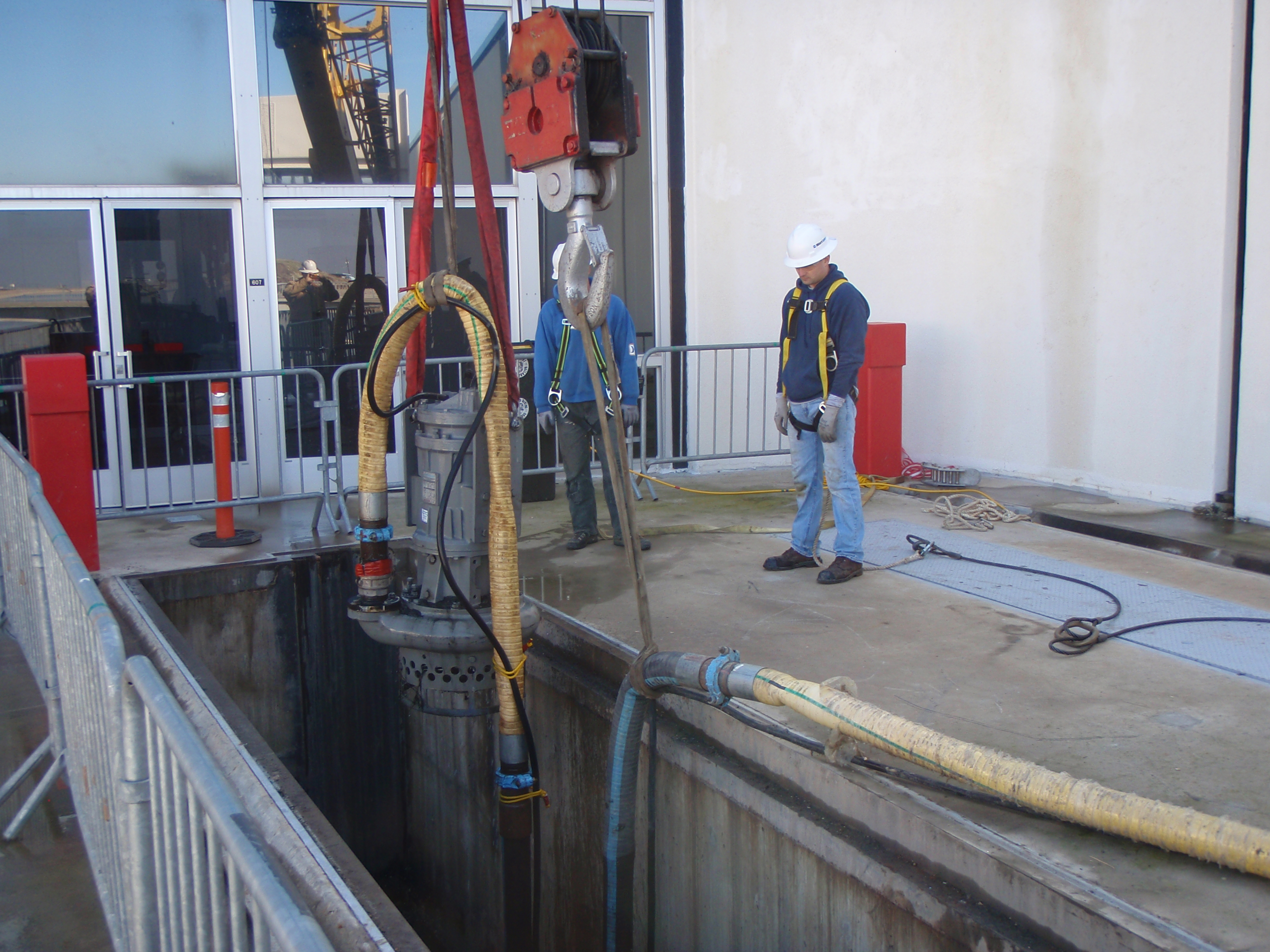ROV Controlled Unmanned Dredging Adjacent to Active Intakes
Hibbard inshore performed an underwater survey and unmanned dredging project in front of units at a major pumping plant. The plant was due to change out each of its pumping units in favor of newer, more efficient models. In order to do this, when the existing units were removed, large amounts of silt and sedimentation from the canal would deposit in the intake area as well as the area where the new unit was to be installed. Because the client had to keep all adjacent units running during the replacement of each unit one by one, placing a diver in the water would have been extremely dangerous. So, having seen that Hibbard Inshore had run pumping operations with its ROVs previously, the client contacted them in order to develop a method and debris removal plan. Prior to arriving on site, Hibbard Inshore worked with the client to address a plan of action for the dredging project and analyze the infrastructure’s drawings to ensure the project could be performed safely and efficiently.
 Dredge Pump Ready to Lift
Dredge Pump Ready to Lift
Hibbard Inshore’s ROV was equipped with video cameras, cross sectioning sonar, forward looking sonar, and a manipulator. The ROV was used to perform a sediment level measurement using its sonar, and then the ROV observed and guided the dredge pump during operations to ensure that all of the sediment was cleared. Before the removal began, Hibbard used its cross sectioning sonar to measure the sediment’s buildup. The cross sections taken from the ROV were compared to the plant’s drawing to determine the sediment buildup below. Following this, Hibbard Inshore maneuvered a dredging pump into the areas that needed cleaning and proceeded to clean the intake area. Sonar measurements were periodically taken throughout the project to check progress and ensure no sediment was missed. Sonar was important as the dredging process made it impossible to visually complete the process. With Hibbard Inshore’s experience in using sonar for navigation, feature detection, and measurement, that was not an issue. Hibbard Inshore successfully completed this dredging for each of several units that needed replacement over the course of a three year period allowing for each to be replaced with a new pumping unit successfully.. For the typical replacement of one of the units, Hibbard Inshore successfully dredged 168 cubic yards of sediment from the intake. To dispose of the sediment, Hibbard Inshore used a submersible pump and moved the sediment to a disposal area upstream. The ROV survey, sediment dredging and disposal typically required a total of four days per unit.
 Dredge Pump being Lowered for Debris Removal
Dredge Pump being Lowered for Debris Removal
This method increased project safety while maintaining project efficiency as neither the ROV nor the pump had any limit on bottom time and could run continuously. This method could be applied to any situation where deep water sediment and debris removal would be beneficial and currents or bottom time are a concern for the safety of divers.

